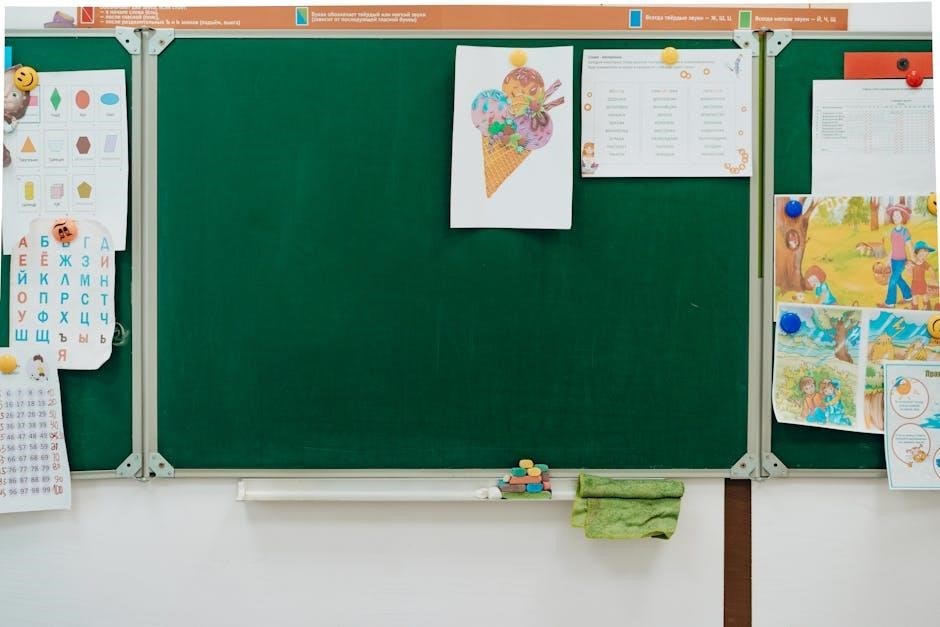Writing Numbers Worksheet 1-20 PDF: A Comprehensive Guide
Are you looking for resources to help young learners practice writing numbers from 1 to 20?
This comprehensive guide explores the benefits of using PDF worksheets to develop early numeracy skills, number recognition, and fine motor skills.
Number tracing worksheets are invaluable tools in early childhood education, designed to introduce young children to the basic shapes and formations of numbers. These worksheets typically feature numbers from 1 to 20, presented in a dotted or outlined format that children can trace over. This hands-on approach helps children develop muscle memory, which is crucial for mastering handwriting skills. By repeatedly tracing the numbers, children become more familiar with their shapes and how to write them correctly.
Beyond handwriting practice, number tracing worksheets also serve as an introduction to early numeracy concepts. Children begin to associate the written symbols with their corresponding quantities, laying the foundation for counting, addition, and subtraction. The worksheets often incorporate visual aids, such as pictures or objects to count, reinforcing the connection between numbers and real-world quantities.
Furthermore, these worksheets can be adapted for different learning styles and abilities. Some worksheets may include additional activities, such as coloring or matching, to engage children and make learning more enjoyable. By providing a structured and interactive learning experience, number tracing worksheets can help children develop a strong foundation in mathematics.
Benefits of Using Number Worksheets for Early Numeracy
Number worksheets offer a multitude of benefits for early numeracy development. Firstly, they provide a structured and repetitive way for children to learn and practice number formation. This repetition is crucial for developing muscle memory and solidifying the correct way to write each number. Consistent practice with worksheets helps children build confidence and accuracy in their handwriting skills.
Secondly, number worksheets aid in number recognition and recall. Through various activities like tracing, writing, and matching, children become more familiar with the visual representation of each number. This familiarity is essential for developing number sense and understanding the relationship between numbers and quantities. Worksheets often incorporate visual aids, such as pictures or objects to count, which further reinforces number recognition and comprehension.
Moreover, number worksheets can be tailored to meet individual learning needs. Teachers and parents can select worksheets that focus on specific numbers or skills, allowing for targeted instruction and support. The flexibility of worksheets makes them a valuable tool for differentiating instruction and ensuring that all children have the opportunity to succeed.
Focusing on Numbers 1-20
The range of numbers from 1 to 20 is foundational in early mathematics education. Mastering these numbers provides children with the building blocks for more advanced mathematical concepts. Worksheets that focus specifically on numbers 1-20 offer targeted practice in number recognition, counting, and writing. This focused approach allows children to develop a strong understanding of these essential numbers.
These worksheets often include a variety of activities designed to engage children and reinforce their learning. Tracing exercises help children develop the fine motor skills necessary for writing numbers accurately. Counting activities encourage children to associate numbers with quantities. Number sequencing exercises help children understand the order of numbers.
By concentrating on numbers 1-20, worksheets provide a manageable and achievable learning goal for young children. This sense of accomplishment can boost their confidence and motivation to continue learning. The consistent practice offered by these worksheets helps children internalize number concepts and develop a solid foundation for future mathematical success. The use of visually appealing designs and engaging activities makes learning numbers 1-20 an enjoyable experience.
Content of a Typical 1-20 Number Tracing Worksheet
A typical 1-20 number tracing worksheet usually contains a variety of exercises designed to help children learn to write and recognize numbers. The core of the worksheet involves tracing dotted lines that form the numbers 1 through 20. This helps children develop muscle memory and improve their fine motor skills.
In addition to tracing, the worksheet may include sections where children can practice writing the numbers independently. This allows them to apply what they have learned from tracing and reinforce their understanding of number formation. Some worksheets also incorporate counting activities, such as counting objects and matching them to the correct number. This helps children connect the written number to its corresponding quantity.
Worksheets often include visual aids, such as number lines or pictures, to help children understand the sequence of numbers and their relative values. The design of the worksheet is usually simple and uncluttered to avoid overwhelming young learners. Clear instructions and ample space for writing are also important features. Many worksheets also include number words alongside the numerals to promote literacy skills. Some advanced worksheets might incorporate comparing activities, using symbols like “>” or “<" to compare numbers.
Tracing Numbers for Fine Motor Skill Development
Tracing numbers is an excellent way to enhance fine motor skills in young children. Fine motor skills involve the small muscles of the hands and fingers, which are essential for tasks like writing, drawing, and buttoning clothes. When children trace numbers, they practice controlling these muscles, improving their dexterity and hand-eye coordination.
The act of following the dotted lines requires focus and precision, strengthening the neural pathways that connect the brain to the hand muscles. This repetition helps children develop muscle memory, making it easier for them to write numbers independently later on. Tracing also encourages proper pencil grip, which is crucial for comfortable and efficient writing.
Furthermore, tracing activities can be adapted to suit different skill levels. Beginners can start with larger numbers and thicker lines, gradually progressing to smaller numbers and thinner lines as their fine motor skills improve. By providing a structured and engaging way to practice number formation, tracing worksheets play a vital role in developing the fine motor skills necessary for academic success. The controlled movements involved in tracing lay the foundation for more complex writing tasks.
Counting Activities Integrated with Writing Practice
Integrating counting activities with writing practice provides a holistic approach to early numeracy education. These activities reinforce number recognition and quantity association, making learning more engaging and meaningful for young children. Worksheets often include images of objects that children can count, followed by a space to write the corresponding number. This combination strengthens the connection between the abstract symbol of a number and its concrete representation.
For example, a worksheet might feature a set of apples that children count and then write the number “5” next to. Such activities not only improve counting skills but also reinforce number formation. By visually connecting the quantity with the written numeral, children develop a deeper understanding of number concepts.
Furthermore, integrating counting with writing allows for varied practice. Worksheets can include tasks where children count objects in a ten-frame or use tally marks to represent a number before writing it. This multi-sensory approach caters to different learning styles and enhances retention. The combination of counting and writing also helps children understand place value, as they learn to represent quantities using numerals. This integrated approach makes learning numbers both practical and enjoyable, setting a strong foundation for future math skills.

Number Recognition and Recall Exercises
Number recognition and recall exercises are crucial components of early math education, helping children develop a strong foundation in numeracy. Worksheets designed for this purpose often include a variety of activities that encourage children to identify and remember numbers from 1 to 20. These exercises are essential for building fluency in number sense, enabling children to quickly and accurately process numerical information.
One common exercise involves presenting a number and asking children to circle or highlight it among a group of other numbers. This activity reinforces visual discrimination and helps children focus on the unique features of each numeral. Another effective exercise includes matching numbers to corresponding quantities or objects. For example, children may be asked to draw a line connecting the number “7” to a picture of seven stars.
Recall exercises can involve completing number sequences or filling in missing numbers in a series; These activities challenge children to remember the order of numbers and their relationships to one another. Worksheets might also include games like number bingo or memory matching, which make learning fun and engaging. By incorporating a variety of activities, these worksheets help children develop both recognition and recall skills, fostering a deeper understanding of numbers and their significance. This foundation is essential for future success in mathematics.
Comparing Numbers and Number Sequencing
Comparing numbers and understanding number sequencing are fundamental skills in early mathematics education. Worksheets that focus on these concepts help children develop a strong sense of numerical order and the ability to determine the relative value of numbers. These skills are essential for building a solid foundation for more advanced mathematical concepts.
Comparing numbers often involves using symbols such as greater than (>), less than (<), and equal to (=). Worksheets might present pairs of numbers, asking children to insert the correct symbol to indicate the relationship between them. For instance, a child might compare 12 and 15, learning that 12 is less than 15 (12 < 15). Activities like these help children understand the relative size of numbers and develop their logical reasoning skills.
Number sequencing exercises involve arranging numbers in the correct order. Worksheets might provide a series of numbers with one or more missing, challenging children to fill in the gaps. For example, a sequence might start with 3, 4, _, 6, and the child would need to fill in the missing number, 5. These exercises reinforce the concept of numerical order and help children recognize patterns in numbers. Sequencing activities can also involve ordering numbers from smallest to largest or vice versa, further enhancing their understanding of numerical relationships.
Creative Ways to Use Number Worksheets (1-20)
Number worksheets from 1 to 20 are versatile tools that can be used in a variety of creative ways to enhance learning and engagement. Beyond simple tracing and writing, these worksheets can be adapted to suit different learning styles and make the learning process more enjoyable for children. Incorporating games, art projects, and hands-on activities can transform a standard worksheet into an exciting learning experience.

One creative approach is to use the worksheets as part of a number-themed art project. For example, children can color in the numbers using different art materials such as crayons, markers, or paint. They can also decorate the numbers with stickers, glitter, or small craft items. This activity not only reinforces number recognition but also encourages creativity and fine motor skill development.
Another engaging method is to turn the worksheets into a game. For instance, a “number hunt” can be organized where children search for specific numbers on the worksheet and then complete a related task, such as drawing that many objects or solving a simple math problem. Alternatively, the worksheets can be used as part of a math bingo game, where children mark off numbers as they are called out.
Integrating hands-on activities can also make number worksheets more interactive. Children can use manipulatives such as counters, beads, or blocks to represent the numbers on the worksheet.

Adapting Worksheets for Different Learning Styles
Recognizing that children learn in diverse ways is crucial when using number worksheets. Adapting these resources to suit different learning styles can significantly enhance their effectiveness. For visual learners, worksheets with clear, colorful illustrations and diagrams are beneficial. These children respond well to visual cues and can easily grasp number concepts when presented in a visually appealing manner. Consider using worksheets that incorporate number lines, ten frames, or pictorial representations of quantities.
Auditory learners, on the other hand, benefit from verbal instructions and opportunities to hear the numbers pronounced. When using worksheets with auditory learners, read the instructions aloud and encourage them to repeat the numbers and counting sequences. Incorporating songs, rhymes, or number-related stories can also be highly effective for this learning style.
Kinesthetic learners thrive on hands-on activities and movement. For these children, adapt the number worksheets by incorporating tactile elements. Provide them with manipulatives such as counters, beads, or blocks to physically represent the numbers. Encourage them to trace the numbers with their fingers or create number shapes using playdough. You can also have them stand up and act out the numbers, such as jumping a certain number of times or clapping their hands to count.
For learners who excel with logical reasoning, present number worksheets that involve problem-solving and critical thinking. These worksheets can include number puzzles, sequencing activities, or simple math problems that require them to apply their understanding of numbers.
Free Printable Number Worksheets (1-20 PDF) Resources
Accessing free printable number worksheets in PDF format is easier than ever, thanks to the abundance of online resources. These worksheets are invaluable tools for parents, teachers, and homeschoolers looking to support early numeracy development. Many websites offer a variety of number tracing, counting, and recognition worksheets that are specifically designed for numbers 1-20.
One effective way to find these resources is by searching educational websites that specialize in providing free learning materials. These sites often have dedicated sections for math worksheets, where you can filter by grade level and topic. Look for worksheets that include a range of activities, such as tracing dotted numbers, filling in missing numbers, counting objects, and matching numbers to their corresponding words.
Another great source of free printable number worksheets is teacher blogs and educational resource platforms. Many teachers share their own created worksheets and activities for free on their blogs, providing a wealth of high-quality resources. Educational resource platforms also offer a wide selection of free and premium worksheets, often with user reviews and ratings to help you choose the best options.

When searching for free printable number worksheets, be sure to check the terms of use and licensing agreements. Most free worksheets are intended for personal or classroom use only and may not be distributed or sold commercially.
Incorporating Number Worksheets into Homeschooling
Homeschooling provides a unique opportunity to tailor education to a child’s specific needs and learning style. Number worksheets, particularly those focusing on numbers 1-20, can be seamlessly integrated into a homeschooling curriculum to build a strong foundation in early numeracy. These worksheets can be used in various ways to create engaging and effective learning experiences.
One approach is to use number worksheets as part of a daily math routine. Start each day with a short number tracing or counting activity to reinforce number recognition and formation skills. Gradually introduce more complex worksheets that involve number sequencing, comparing numbers, and simple addition or subtraction problems.
To make learning more interactive, incorporate number worksheets into hands-on activities. For example, use small objects like buttons or beads to count and match to the numbers on the worksheet. Create a number line using the worksheets and have your child practice counting forward and backward.
Another effective strategy is to use number worksheets to create games. Turn number tracing into a race against the clock or create a matching game by pairing number cards with corresponding worksheets. This can help maintain their attention.
Remember to adapt the worksheets to your child’s learning style. If your child is a visual learner, use colorful worksheets with lots of pictures. If your child is a kinesthetic learner, incorporate movement and hands-on activities.
Assessing Progress and Further Learning
Regularly assessing a child’s progress is crucial to ensure they are mastering number concepts and skills effectively. Number worksheets can serve as valuable tools for monitoring progress and identifying areas where additional support may be needed. Observe the child as they complete the worksheets, noting their speed, accuracy, and any difficulties they encounter.
Pay attention to whether the child is able to accurately trace and write numbers, count objects, and complete simple math problems. If the child struggles with a particular skill, provide targeted practice and support. Break down the skill into smaller steps and use a variety of activities to reinforce learning.
Once the child has mastered numbers 1-20, gradually introduce more advanced concepts, such as counting to higher numbers, skip counting, and basic addition and subtraction. Continue to use number worksheets as a tool for practice and assessment, but also incorporate real-world math problems and hands-on activities to make learning more engaging.
Remember to celebrate the child’s successes and provide encouragement along the way. Positive reinforcement can help build confidence and motivation, making learning a more enjoyable experience.
Ultimately, the goal is to foster a love of learning and a strong foundation in math that will serve the child well throughout their academic journey. Number worksheets are just one tool in a comprehensive approach to early numeracy education.
